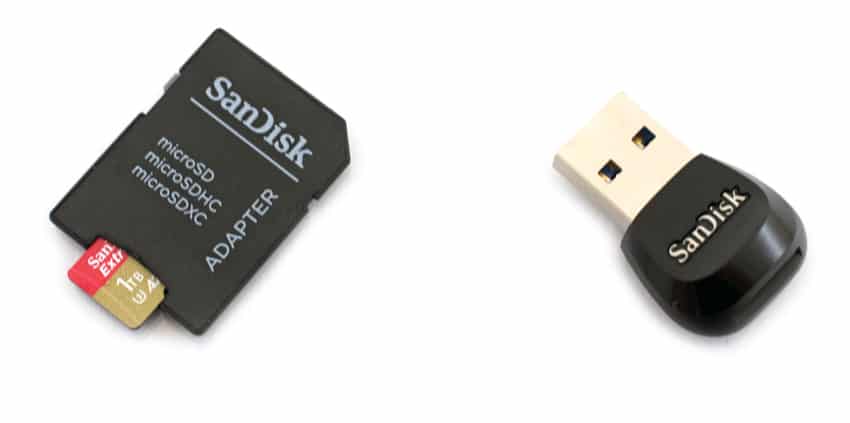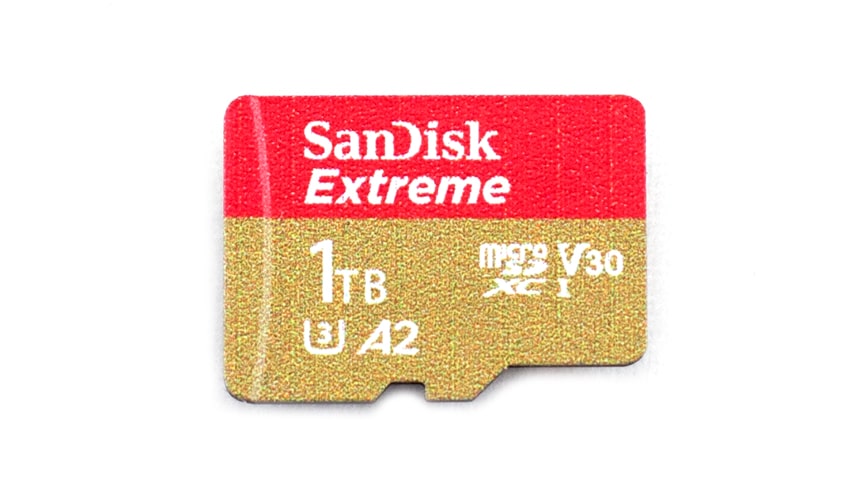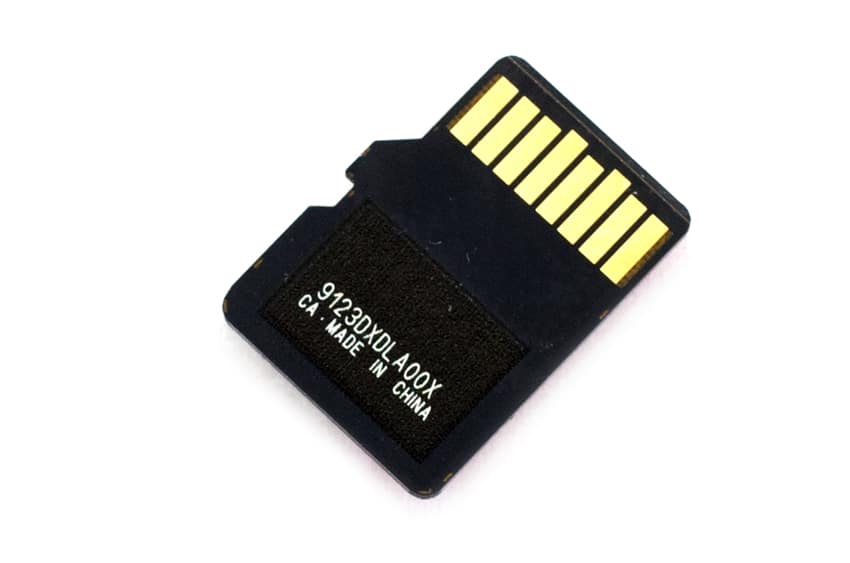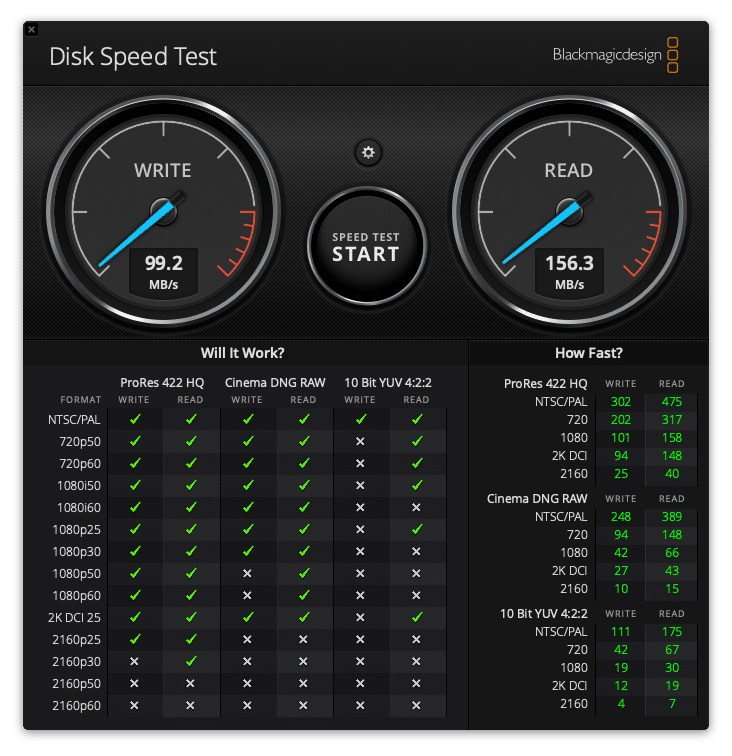
Announced in February of this year, the 1TB SanDisk Extreme UGH-I microSDXC card is one of the world’s first 1TB microSD cards, and is quoted to be the fastest. This card is designed to address a number of issues, such as capturing and storing large files while out in the field, successfully removing the need to carry and swap multiple cards due to small capacity limitations.

Not only does the SanDisk microSD reach a ground-breaking capacity of 1TB, it quotes some impressive speeds as well, with read speeds quoted to reach 160MB/s and write speeds up to 90MB/s. Additionally, the 1TB A2 performance is quoted at 4,000 IOPS read and 2,000 IOPS write.
As one can probably guess with a 1TB capacity, the price isn’t insignificant. The 1TB SanDisk Extreme microSD UHS-I carries an MSRP of $449.99.
SanDisk Extreme UHS-I microSDXC card key specifications
| Capacity | 1TB |
| Form Factor | microSDXC |
| Performance | |
| Read speed | Up to 160MB/s |
| Write speed | Up to 90MB/s |
| Video Speed | C10, V30, U3, A2 |
| SD Adapter included | |
| Warranty | Lifetime (or 30 years, depending on region) |
Design and Build
The SanDisk Extreme continues to carry the branding style of other SanDisk Extreme microSD cards. The front of the card contains branding and capacity information. The top half of the front is red while the bottom half is gold.
The gold pins which are used to transfer user data are found on the back of the card. Additionally, at the bottom, you may find the serial number as well as the origin of manufacturing.
Performance
In this review, we will compare the 1TB SanDisk Extreme UGH-I microSDXC Card with the following microSD cards:
Using our Lenovo ThinkStation P920 Workstation Consumer Testing Platform, we measured 2MB sequential transfer speeds from the SanDisk with 160.13MB/s read and 100.93MB/s write. The Samsung posted 92.15MB/s read and 84.62MB/s write, while the Adata measured sequential read speeds of 60.6MB/s and sequential writes of 33.41MB/s.
When comparing random large-block transfers, the SanDisk hit 113.89MB/s read and 60.29MB/s write. Here, the Samsung was able to hit 85.73MB/s in read and only 1.16MB/s write, while the Adata had 50.58MB/s read and 29.81MB/s write.
For Random 4k transfers, the SanDisk hit 1,215.85 IOPS read and 560.72 IOPS write. The Samsung posted results of 1,480 IOPS read and 420 IOPS write while the Adata hit speeds of 2,971 IOPS read and 1,190 IOPS write
We also put the card through the Blackmagic disk speed test using a current generation MacBook Air, which boasted 156.3MB/s read and 99.2MB/s write.
Conclusion
The 1TB SanDisk Extreme UHS-I microSDXC card is designed to provide faster app boots for Android smartphones, capturing fast-action photos with action cameras, and recording 4K UGH video with drones. It carries an impressive max capacity of 1TB, and quotes impressive performance figures up to 160MB/s reads and 90MB/s writes.
Looking at performance, the SanDisk was able to hit 2MB sequential speeds of 160.13MB/s read and 100.93MB/s write, random speeds of 113.89MB/s read and 60.29MB/s write, and random 4K speeds of 1,215.85 IOPS read and 560.72 IOPS write. These figures put the SanDisk at the top of the charts for most of the tests, but was bested by both microSD cards in Random 4K transfers, with the exception of writes, where it got the upper hand on the Samsung. With BlackMagic the microSD card was able to hit 156.3MB/s read and 99.2MB/s write.
Overall, this microSD card is, without a doubt, a solid addition to the SanDisk Extreme family. When looking at the capacity and performance, it makes the price tag seem a little more reasonable.
SanDisk Extreme microSD at Amazon
1TB SanDisk Extreme Product Page
Sign up for the StorageReview newsletter



